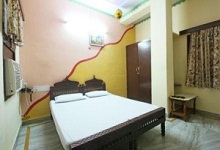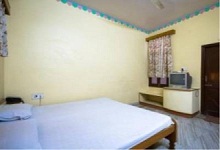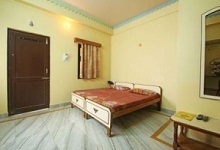JODHPUR
Jodhpur is the second largest city of Indian states of Rajasthan. Jodhpur was the ancient capital of the kingdom of Marwar, which is now a part of Rajasthan. Jodhpur is very popular among the tourists visiting Rajasthan, as it features many palaces, fort, temples, villages and lakes with distinct cultures and its history. Jodhpur lies in the stark landscape of the Thar Desert. Jodhpur is also said to be the cultural capital of Rajasthan. The old city of Jodhpur is painted in blue probably to escape the heat or for adornment giving it the title of ‘Blue City’ due to it numerous shapes of local houses those are painted in blue colour. The establishment of Jodhpur dates to around 1459 when Rathore Rao Maldeo Jodha a Rajput chief of the Rathore clan shifted his capital from Mandore to Jodhpur. From then onwards for the last 450 to 500 years Jodhpur stands as a witness of many incidents and wars. The Rathor’s were from Kannauj, but during 1193 when Muhammad Ghori ruined everything. During that time the Rathore shifted their kingdom at Marwar of the Rajputs and Mandore being the ancient capital of Marwar. In the year 1458 when Rao Jodha became the king, he shifted his capital around 09 km to the south from Mandore and built a city and named it Jodhpur. During the 16th century Jodhpur was the main business hub of the Rajputs. The elevation of Jodhpur measures upto 246 meter from the plains. Jodhpur serves as the entry point of Thar Desert or the Great Indian Desert and is also known as ‘Sun City’ for the bright, sunny weather it enjoys all the year round. Around the city of Jodhpur tourists get to see numerous parrots and peacocks are seen everywhere. The city of Jodhpur is also home to some of the renowned institution of the country like AIIMS Jodhpur, IIT Jodhpur, SNMC Jodhpur and many more. Apart from the institutions Jodhpur is also home to many research institutes like ISRO, DRDO, DMRC, DRDO and many more. Being located near the geographic center of Rajasthan, Jodhpur forms a convenient base for tourists as a frequent travel destination. Jodhpur is bound by Nagaur in East, Jaisalmer in west, Bikaner in North and Barmer as well as Pali in the South.
Places of tourists interest around Jodhpur:
Meherangarh Fort: Meherangarh Fort lies around 5 km from the city of Jodhpur at an elevation of 125 meter (approx 410 ft) on the top of Godagiri Hills. Once Rudyard Kipling described Mehrangarh Fort as “A palace that might have been built by the Titans and coloured by the morning sun”. The Mehrangarh Fort has seven entrances or entry gates locally known as Pole, with each pole named differently like Jai Pole (Gate of Victory – built by Maharaja Mann Singh in 1806 to celebrate his victory in war with Jaipur and Bikaner), Fateh Pole (built to celebrate the victory over the Mughals in 1707), Lakhna Pole or Dedh Kanghra Pole (this pole still bears the scars of bombardment by cannonballs), Amriti Pole, Loha Pole (this is the final gate to the main part of the fort. To its left the handprints of the queens those immolated themselves on the funeral pyre of Maharaja Mann Singh in 1843), Imritha Pole and Suraj Pole. The ramparts of the fort house preserved old cannons including the well known Kilkila. The roof top of Meherangarh fort offers panoramic view of the whole city of Jodhpur. The fort measures around 457 meter long, 228 meter wide and guarded by 101 bastions, the outer section is guarded by long walls those covers upto 10 km of area, with 36 meter high walls and 21 meter wide walls. Meherangarh Fort is a five storey fort and remains open for tourists visit from 09.00 am to 05.00 pm.
Meherangarh Fort Museum: The museum in the Meherangarh Fort of Jodhpur is one of the well stocked museums at Rajasthan that has the unique collections of Howdahs, Royal Palanquins, royal cradles, miniature paintings, musical instruments, costumes, furniture, gigantic sized lock, sword, knives and arms. The 17.5 kg gigantic lock inside the armoury is another example of historical importance.
Palaces: Jodhpur houses some of the excellent crafted and designed palaces which are worth visiting. All these palaces symbolize the artistic excellence of the then Jodhpur. These Palaces are Moti Mahal (Pearl Palace), Phool Mahal (Flower Palace), Shees Mahal (Mirror Palace), Silesh Khana, Hawa Mahal, Jaki Mahal, Palki Mahal and Daulat Khana. The excellent works of the stone carved meshes (Jafris) and the delicate work of glass painting and the wooden design on the ceiling are some of the examples of the artistic excellence during that period. The Phool Mahal inside the Meherangarh Fort built by Maharaja Abhay Singh was constructed with 80 kg of gold. The delicate flower works on the pillars of the palace are worth remembering.
Armoury and Library: The armoury inside the Meherangarh fort displays rare armour collections of each period of Jodhpur. Some of these are Sword hilts in jade, silver, rhino horn and ivory, Shields studded with rubies, emeralds and pearls, Guns with gold and silver work on the barrels. The armour also displays the personal swords of some emperors to name but a few are the sword of Khaanda Rao Jodha, Akbar and Timur. The library has a huge collection of more than eight thousands books and manuscripts.
Chokelao Bagh: Chokelao Bagh at Jodhpur lies within the periphery of the Meherangarh Fort established by Maharaja Abhai Singh in the year 1739 and later rearranged by Maharaja Takht Singh in 1844. The Garden was planned as a terraced chahar bagh and restored over the last ten years. The garden is divided into three terraced area with each garden designed uniquely displaying the Mughal influence during that period. The garden is home to several flowers and plants those survive in the hot temperature of the desert.
Masuria Hill Garden: Masuria Hill Garden is a perfect sunset point in Jodhpur. Masuria garden is one of the finest and famous gardens at Jodhpur. Masuria Hill garden offers panoramic view of the whole city of Jodhpur. Masuria Hill garden is quite popular among devotees as it houses a centuries-old temple dedicated to Baba Ramdev, a local deity. The garden is though small but the frontal park in memory of Durga Das is worth mentioning.
Jashwant Thada: This is the cenotaph of King Jashwant II built in the year 1899. The structure is build with white colour marbel. The cenotaphs of other members of the royal family are also seen here. The place remains open for visitors from 09.00 am to 05.00 pm.
Umaid Bhawan and Palace: This place was built by King Umaid Singh to provide a source of income and employment to the farmers. Built in the year 1929, it took 3000 men to build this palace in thirteen years. This palace was completed in the year 1942. The palace complex is set on an area of 26 acres of land including 15 acres of garden. The palace measures 640 feet long, 340 feet wide, inside the palace there are 347 rooms. At present the palace is divided into three parts, one part of this palace is a museum, one part is converted into a luxurious hotel and one part of the palace is the principal residence of the former Jodhpur royal family. Inside the palace tourists get to see numerous types of watches along with private jet used by the king. From the ticket counter of Umaid Bhawan to the straight is the palace and to the left of the palace is the museum that exhibits stuffed leopards and classic display of many vintage modeled cars those are kept on display for tourists and visitors. The palace is made of dun – coloured golden yellow sand stone with two wings. Markana marbel has also been used along with Burmese teak wood used for the interior work. The architecture of the palace represents Indo – Saracenic style.
Bal Samand Lake and Palace: Balsamand Lake is located around 08 km from the city of Jodhpur. The lake was built during 12th century. But the palace was built during 17th century by Maharaja Jashwant Singh I of Jodhpur. The estate was built over an area of 60 acres with sprawling orchards of lime and pomegranate and landscaped gardens criss-crossed by elegant waterways and even an aqueduct. Near the palace there is a temple of ‘Maa Santoshi’. During winter many migratory birds Bal Samand Lake gathers near the lake.
Kaylana Lake: Kaylana Lake is located around 8 km to the west of Jodhpur. This is an artificial lake built by Pratap Singh in the year 1872, The Kaylana Lake is spread over an area of 84 sq km. Kaylana lake lies between igneous rock land formations. The lake receives its water from Hati Nehar canal, which is further connected to the Indira Gandhi canal. The natural vegetation here mostly consists of Babool trees, during winter numerous migratory birds are seen near the lake. The city of Jodhpur and all the surrounding towns and villages depends on Kaylana Lake as a source of drinking water. This is a perfect spot for sunset view.
Mandore Garden: This was the ancient capital of the Marwas, located around 09 km from the city of Jodhpur. The kingdom of Mandore was taken over from the Pratiharas by the Rathores who ruled here from 06th to 14th century. The Mandore garden is spread over a vast area, with gigantic sized trees like banyan, blackboard tree or devil’s tree, sheesham or shisham trees and many more along with its collection of temples and memorials and its high rock terraces. The garden houses the cenotaphs of many eminent rulers of Jodhpur. Mandore Garden also houses a government museum, a ‘Hall of Heroes’ dedicated to the popular folk heroes of the region, it is cluster of 16 figures carved out of a single stone and a Hindu temple with 33 crore gods. At the entrance of this garden replicas of two dogs are placed.
Osian: Oshian lies on the Jaisalmer to Jodhpur road located around 70 km from the city of Jodhpur. Osian is famous for the cluster of ruined Hindu and Jain temples those dates back to 08th to 12th century. These temples were built in two parts. There are 18 shrines in the group, among these the Surya Temple, Sun Temple, Sachiya Mata Temple and the Jain temple dedicated to Mahavira are worth mentioning in terms of their grace and architectural excellence. Osian is an oasis of the Thar Desert. The town was a major trading center during the Gupta period. Later the spot gained importance by the Jain as one of the religious site.
Bishnoi Village: Bishnoi village of Jodhpur, Rajasthan is a scenic beauty marked with Khejri trees and deer. The locals of this village are very religious and follow many rituals and principals in their day to day lifestyle, the villagers are staunch worshippers of nature in all its forms. Among these felling of trees and hunting of wild animals is strictly prohibited in the village. In this village tourists get to see numerous peacocks and deer those roam around freely. Though the village is mostly visited by foreign tourists than local tourists. The Black Buck Wildlife sanctuary is located near this village. This village is also known for its handicraft artisans. The Guda Bishnoi Lake in this village is a natural lake, perfect as a picnic spot.
Mahamandir temple: Mahamandir temple is located 2 km from the city of Jodhpur on the way to Mandore. The architecture of the temple is supported on 84 pillars and the main deity of the temple is Lord Shiva. The intricate stone carvings of the temple exhibit yogic postures, frescos and other artistic works. Presently the temple is one of the prime tourist attractions around Jodhpur, as it is located amidst a calm and peaceful environment.
Sardar Samand Lake Palace: Sardar Samand Lake is a retreat for bird watchers located around 60 km to the south east of Jodhpur. Due to the location and the scenic landscapes of the lake countless migratory birds gathers near the lake in winter, to name but a few are yellow-legged green pigeon, Himalayan griffon, and Dalmatian pelican. Tourists often spots wildlife like Black Buck, Neelgai and Chinkara roaming near the lake. The lake palace was built by Maharaja Umaid Singh in the year 1933. It lies on the way to Udaipur and Ranakpur from the city of Jodhpur.
Mahamandaleshwar Mahadev temple Jodhpur: This temple at Jodhpur is a sacred to Lord Shiva, built during 923 AD. This temple is believed to be the oldest in the region. The walls of the temple are decorated with the finest miniature paintings of Lord Shiva and Parvati.
Arna Jharna: This is a Desert museum located around 15 km from the city of Jodhpur lies in the village of Moklawas. The meaning of the word Arna – Jharna means ‘Forest and Spring’, spread over an area of 10 km. The area is also rich in bio diversity. The museum can be described as a process of interactive learning experiences linked to traditional knowledge systems.
Shopping around Jodhpur: Jodhpur has many options for tourists to shop around. The clock tower is situated at the midst of the city and numerous shops are selling varieties of products surrounding it. Nagra shoes, blankets, printed cloths and many more.
Getting there:
By Rail: Jodhpur is well linked with other tourist’s destinations at Rajasthan and other major cities of India by strong rail networks. Some of the known rail routes are 15013 Ranikhet express leaves Jaisalmer at 12.45 am and reaches Jodhpur the next day at 06.20 am, 14888 Kalka express leaves Barmer at 06.45 am and reaches Jodhpur the same day at 10.15 am, 12308 Jodhpur express leaves Jodhpur at 08.30 pm and reaches Howrah Jnc the third day at 04.00 am, 4060 – A Manali express leaves every Tuesday at 06.30 pm and reaches Jodhpur the same day 10.00 pm and 5631 Barmer – Bikaner – Gawahati express leaves Barmer every Sunday at 09.00 pm and reaches Jodhpur at 12.15 am.
By Road: Strong motorable roads connect Jodhpur with other destination of Rajasthan. Rajasthan state transport buses are available those connects all major cities and tourist destinations around Rajasthan with Jodhpur. Also shared and hired taxis and cars are available for the whole city tour.
By Air: Jodhpur is also well connected by flight services within Rajasthan and all major cities of India. The Jodhpur airport is a civil enclave airport located around 3.2 km from the main city of Jodhpur. The bus terminus of Jodhpur is located within 8.7 km from the airport and Jodhpur railway station is around 5 km from the airport.
Best time of visit: April to May is the pre – monsoon season or summer season. July to September is the monsoon period which sees rainfall. October to November is the post – monsoon season when the climate is pleasant. December to March is the winter season. December and January are the year’s coldest month.
Suggested tours of Rajasthan with Jodhpur:
3Nights and 4Days:
- Udaipur – Ranakpur – Kumbhalgarh – Jodhpur
- Jodhpur – Jaisalmer – Jodhpur
- Jodhpur – Mandore – Bikaner – Jodhpur
5Nights and 6Days:
- Chittaugarh – Udaipur – Kumbhalgarh – Ranakpur – Jodhpur
6Nights and 7Days:
- Jaipur – Pushkar – Ajmer – Udaipur – Kumbhalgarh – Ranakpur – Jodhpur
- Jaipur – Samode – Mandawa – Bikaner – Jaisalmer – Jodhpur
- Jaipur – Bikaner – Jaisalmer – Jodhpur – Mt. Abu – Udaipur
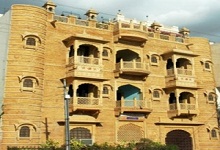
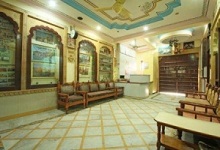

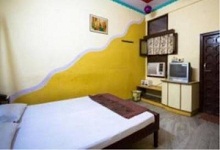
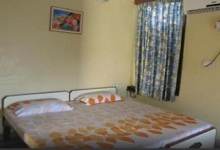
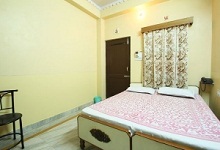
HOTEL RAMAN PALACE
Hotel Raman Palace is situated at heart of Jodhpur city. Hotel Raman Palace has 20 rooms well furnished rooms (both A/C and non A/C). Hotel Raman Palace is a perfect blend of comfort within affordable budget. The rooms of Hotel Raman Palace are divided into double, triple and four bed accommodations. The quality, ambience and services rendered by Hotel Raman Palace are appreciated not only by domestic tourists but also tourists across the Globe. Hotel Raman Palace is located within 1 km from Jodhpur railway station, 1 km from the bus terminus and 3 km from the airport.
Amenities available:
Centrally located within the city.
Well furnished rooms with attached bathrooms.
Western type toilets in all rooms
Round the clock room service
Roof top restaurant offers stunning view of he city of Jodhpur
Serves India, continental and local dishes as well (paid service)
Pick up and drop facility on request (paid service)
Arrangement of local sightseeing and village and camel safari as well.
Colour T.V. in all the rooms
Room Tariff:
Economy Rooms – Rs.1000/-
Standard Rooms – Rs.1300/-
Deluxe Rooms – Rs.1500/-
Super Deluxe Rooms – Rs.2000/-
Service charge @ 10% on the above room tariffs.
GST as applicable, payable at spot.
HOW TO BOOK: Call us at 9831311606 , 9830381306, 9830619422, 9831208172 to get the current availability status or use the query form furnished below with all you travel queries and submit, we will call/ contact you directly.
Or, you may also directly book from our Kolkata office at: 8C Shanti Ghosh Street, Kolkata – 700003. Nearest Landmark: Manindra Chandra College and Shyambazar Metro Railway Station (Gate No: 3)


